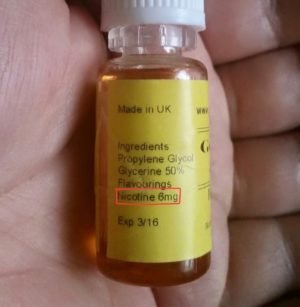Vaping: can you catch your breath?
October 5, 2018
Anybody can describe a traditional cigarette— a small rolled up porous paper containing tobacco leaves. However, the Electronic Nicotine Delivery Systems (ENDS), also known as e-cigarettes, e-hookah, vape sticks, and vape pens, are becoming overwhelmingly popular recently. What exactly is this high-tech apparatus?
E-cigarettes produce small puffs of vapor clouds—hence the name “vaping.” This battery-powered device transfers nicotine with a liquid called e-juice and comes in flavors, such as bubblegum and fruit. A mouthpiece, or a cartridge, is included at the end of the tube. Inside is a plastic storage tank with an absorbent that holds the flavored solution. Most cartridges can be reused with a replaceable one, and some are disposable. Another component is a heating element, also known as an atomizer, which warms up the liquid with a coil and form vapors. There is also a sensor that triggers the heater with a small LED screen. Therefore, when a person sucks on the mouthpiece, the heating element gets activated. After all, the vapor industry claims that the sole purpose of e-cigarettes is to offer healthier alternatives to conventional smoking.
 The first idea of an electronic cigarette sprang up in the 1920s. Although the concept was quickly shut down by the FDA, it quickly made a resurgence in 2003 when Hon Lik, a pharmacist from China, invented his own version. The device, created in honor of Lik’s father who died from lung cancer, was supposed to aid citizens to quit smoking. It was not until 2006 that e-cigarettes were properly introduced to the western culture. At this moment, one of the most well-known e-cigarette brands is JUUL. As a matter of fact, many prefer JUUL models as the designs are discrete, looking almost like flash drives.
The first idea of an electronic cigarette sprang up in the 1920s. Although the concept was quickly shut down by the FDA, it quickly made a resurgence in 2003 when Hon Lik, a pharmacist from China, invented his own version. The device, created in honor of Lik’s father who died from lung cancer, was supposed to aid citizens to quit smoking. It was not until 2006 that e-cigarettes were properly introduced to the western culture. At this moment, one of the most well-known e-cigarette brands is JUUL. As a matter of fact, many prefer JUUL models as the designs are discrete, looking almost like flash drives.
While vaping is a relatively new activity, the concept of a battery-operated cigarette has been catching attention of many around the world. In fact, there are approximately 20.8 million vapers worldwide, and 9 million people spends over $3.7 billion per year on vape products in the United States. Additionally, according to Medical News Today, the use of e-cigarettes has increased by 900% among high school students from 2011 to 2015–only 4 years.
As mentioned before, e-cigarettes were invented to bypass the dangers of traditional smoking and act as a substitute for existing smokers. A study from the British Medical Journal (BMJ) found that the use of e-cigarettes have been successful in helping users quit smoking, and this action was encouraged due to inhalation of vapors instead of tobacco smoke. E-cigarettes emit fewer toxicants than tobacco, and the switch can actually save 3.3 million life-years by the year 2070.
 However, an immense body of research suggests that vaping is still harmful to the body. Besides including carcinogens (substances that promote cancer), e-cigarettes do contain nicotine, a highly addictive ingredient. Although users can select their preferred percentages of nicotine, ranging from 0% to 36%, nicotine levels can be equivalent to or even higher than cigarettes.
However, an immense body of research suggests that vaping is still harmful to the body. Besides including carcinogens (substances that promote cancer), e-cigarettes do contain nicotine, a highly addictive ingredient. Although users can select their preferred percentages of nicotine, ranging from 0% to 36%, nicotine levels can be equivalent to or even higher than cigarettes.
The U.S. Surgeon General also states that users can come across other dangerous chemicals, such as diacetyl, a buttery tasting chemical that can provoke severe lung disease called “popcorn lungs.”

The Centers for Disease Control And Prevention (CDC) also recently released data that shows increased calls to the poison control centers due to e-cigarette exposure poisonings. As a matter of fact, other people are also still at risk for second-hand smoking as vaping delivers carcinogenic emissions into the air. Another thing to consider is that there were 134 reports of batteries in e-cigarettes overheating and exploding between 2009 to 2016, according to Michael Felberbaum, an FDA spokesperson.
In the long run, even if vaping can prevent smokers from reaching for another cigarette, it has not been proven safe. The debate on vaping is still concurrent and health experts are still researching on the use of this device.






























